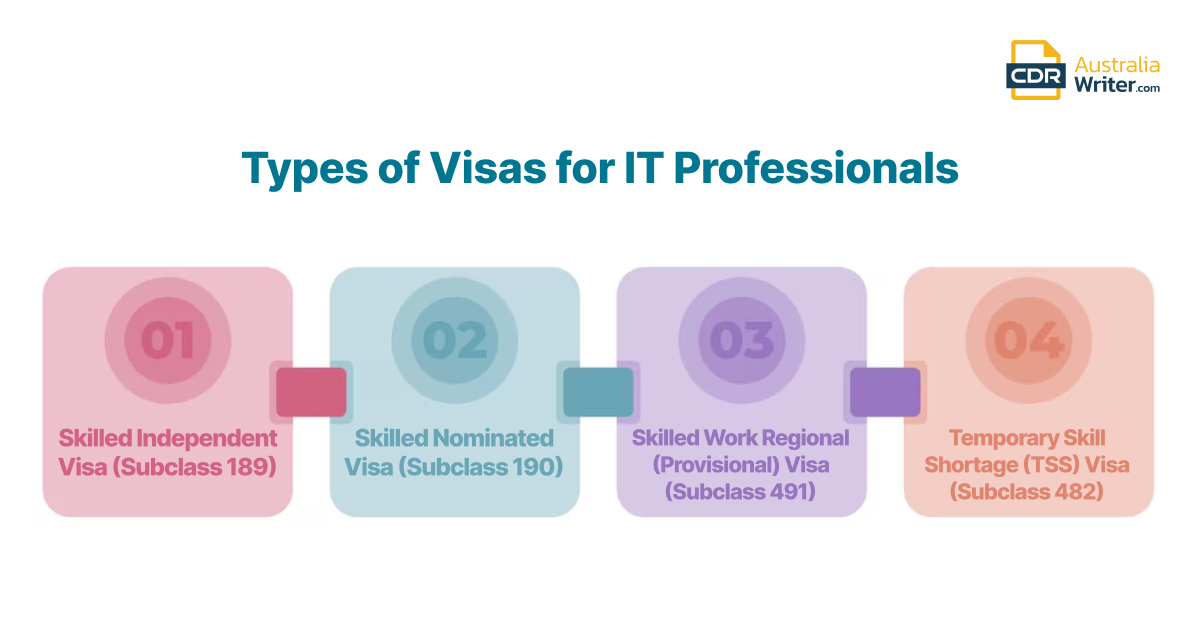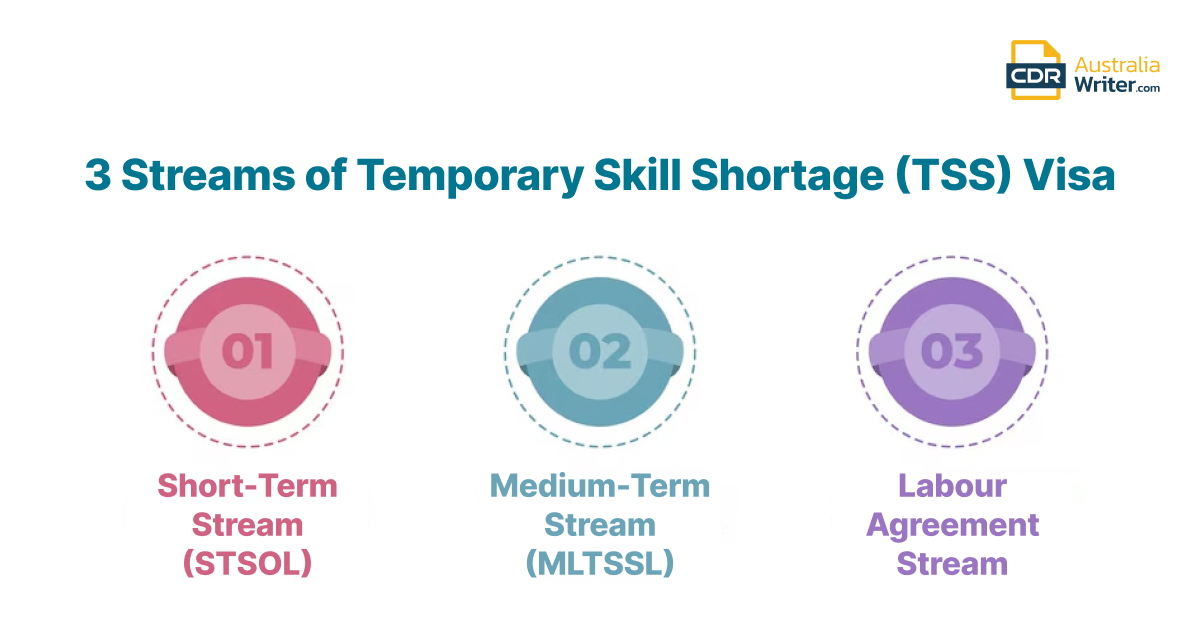How IT Professionals Can Successfully Migrate to Australia?
Australia, known for its robust economy, beautiful scenery and high standard of living has quickly become one of the right destinations for IT professionals looking to further their careers. Australia provides ample opportunities for software development, cybersecurity, data science and database administration across various IT fields.
If you are an IT professional aspiring to migrate to Australia, this guide offers essential information and steps for making the transition as smooth as possible.

Australia's Migration System for IT Professionals
Australia’s migration system is specifically tailored to attract skilled professionals from around the globe and address workforce gaps and shortages. IT specialists have an opportunity to explore various visa pathways available specifically tailored to them in this guide; here, we explore key visa pathways available so they can make informed decisions.
Types of Visas for IT Professionals
Following are the types of visa for IT Professionals.
1. Skilled Independent Visa (Subclass 189)
This points-based visa does not require sponsorship from employers or state/territory governments; to qualify, simply submit an Expression of Interest via SkillSelect and wait to be invited to apply. Once granted, this visa grants permanent residency enabling you to live and work anywhere across Australia.
2. Skilled Nominated Visa (Subclass 190)
This points-based visa requires nomination by either state or territory governments, and meets eligibility requirements listed on their skilled occupation list and additional criteria. Once approved, this visa grants permanent residency with requirements that specify living and working within its nominating state for a set period. It offers skilled professionals the chance to expand their careers while contributing to regional growth across Australia.
More Posts:
Have Any Question?
CDRaustraliawriter specialises in high-quality CDR, RPL and VETASSESS reports for engineers. CDRaustraliawriter offer low-cost, customized and reliable services in diverse engineering disciplines.
- +61 482 072 465
- [email protected]
3. Skilled Work Regional (Provisional) Visa (subclass 491)
The Subclass 491 visa is a points-based program tailored specifically for skilled workers looking to live and work in certain regional areas of Australia. Nomination from either state or territory governments or sponsorship by qualified relatives living there are both requirements for eligibility; furthermore, this visa also provides access to permanent residency visa Subclass 191, making it an excellent long-term solution for Australian regional communities. Take the first step toward your Australian dream today by discovering its benefits and requirements by exploring this visa.
4. Temporary Skill Shortage (TSS) Visa (subclass 482)
The Temporary Skill Shortage (TSS) visa enables skilled workers to work in Australia with approved employers in occupations listed on either the Short-Term Skilled Occupation List (STSOL) or Medium and Long-Term Strategic Skills List (MLTSSL). It offers short and medium term streams, each with distinct validity periods and pathways towards permanent residency. Acquiring one is an invaluable way of gaining valuable work experience in Australia while opening doors to future residency options. Discover its requirements and benefits today and start taking the first steps toward making your future success.

Points-Based System for Skilled Migration to Australia
Australia uses an elaborate points-based system to evaluate applicants for skilled migration visas, to ensure that only qualified candidates are considered. Each visa category has specific point requirements; points are awarded based on essential criteria such as qualifications or experience. Below are key components that contribute to points calculation:
Age:
Applicants aged between 18 and 44 years receive higher points compared to younger candidates, reflecting the importance of experience and potential longevity in the workforce.
English Language Proficiency:
Points are awarded based on English language test scores from recognized assessments such as IELTS, PTE, TOEFL, or CAE, highlighting the need for strong communication skills.
Skilled Work Experience:
Relevant work experience in your nominated occupation is rewarded with points, emphasizing the value of practical skills in your field.
Educational Qualifications:
Higher educational qualifications, including a bachelor’s degree or above, attract more points, showcasing the significance of academic accomplishments.
Nominations and Sponsorships:
Receiving a nomination from a state or territory government or securing employer sponsorship can earn additional points, improving your chances of selection.
Other Factors:
IT professionals can earn extra points through factors such as Australian study qualifications, skills possessed by a partner, and completing regional study, further enhancing their eligibility.
Skills Assessment Process for Skilled Migration to Australia
Before you embark on your journey to apply for a skilled migration visa, it’s essential to confirm that your occupation is listed on Australia’s Skilled Occupation List (SOL). The SOL outlines various occupations that are in high demand within the Australian labor market. Each occupation is categorized under distinct ANZSCO codes, which help delineate the associated tasks and responsibilities.
Obtaining a Positive Skills Assessment
A positive skills assessment is a crucial requirement for most skilled migration visas, as it validates that your qualifications and work experience align with your nominated occupation’s requirements.
Each occupation has an assigned assessing authority responsible for reviewing skills assessment applications. For IT professionals, the standard assessing authorities include the Australian Computer Society (ACS), Engineers Australia (EA), and the Australian Institute of Management (AIM).
The skills assessment process typically involves the following steps:
a. Preparing and Submitting Documents:
Gather all of the documents necessary for your skills assessment application, including academic transcripts, CV, professional certifications and employer reference letters which showcase your expertise and experience.
b. Applying to the Assessing Authority:
Submit your skills assessment application to the relevant assessing authority, taking care to meet all occupational-specific requirements while providing accurate, thorough information in order to avoid delays and/or hassle.
c. Assessment Outcome:
After reviewing your application in detail, an assessing authority will issue a skills assessment result – either positive or negative. For IT professionals pursuing visa application processes, having received positive results from this assessment is imperative to moving forward successfully.
d. Professional Year Program (if applicable):
IT professionals may need to complete a Professional Year Program before moving their careers overseas. This structured professional development program, run in conjunction with industry bodies and educational institutions, aims to expand your employment skills and cultural awareness in Australia and secure extra points on your visa application process.
Looking for expert Skill Assessment Writers for Engineers Australia?

Preparing CDR reports, resumes, VETASSESS, and RPL applications can be challenging. Our expert team has successfully helped clients get approved with professional services for all these needs.
English Language Proficiency
IELTS (International English Language Testing System)
The IELTS is one of the most widely recognized tests of English proficiency used to apply for Australian visas, evaluating four key skills – listening, reading, writing and speaking. Scoring on its nine-band scale determines minimum scores required depending on which visa category is applied for.
Other English Language Tests
In addition to IELTS, several other English language tests are recognized by Australian immigration authorities for visa applications: Pearson Test of English (PTE), Cambridge English: Advanced (CAE), and Test of English as a Foreign Language (TOEFL). Each of these exams features its own scoring system but all are recognised as valid assessments of English language ability by Australia’s government.
Expression of Interest (EOI) and Points Calculation
Submitting Your EOI through SkillSelect
The Expression of Interest (EOI) is an essential step in the skilled migration process for IT professionals. To apply for a skilled migration visa, you must submit your EOI through SkillSelect, the online platform managed by the Department of Home Affairs. SkillSelect allows you to highlight your skills, qualifications, and work experience while expressing your interest in a specific visa subclass.
Points Calculation
The points-based system is vital for determining your eligibility for skilled migration visas. Your points total ranks you in the EOI pool, with higher-ranking candidates having a greater likelihood of receiving an Invitation to Apply (ITA) for a visa. Key factors in the points calculation include:
- Age: Points are awarded based on your age at the time of EOI submission, with younger candidates receiving more points.
- English Language Proficiency: Achieving higher scores in English language tests results in more points. For instance, an IELTS score of 8 or above in all bands can earn 20 points, while a score of 7 may yield 10 points.
- Skilled Work Experience: The number of years spent in your nominated occupation impacts the points awarded. For example, having at least three years of experience could earn you 5 points, whereas eight or more years could yield 15 points.
- Educational Qualifications: More advanced degrees can amplify your points. A Ph.D. or equivalent can earn 20 points, while a bachelor’s degree may provide 15 points.
- Nominations and Sponsorships: Receiving a nomination from a state or territory government or employer sponsorship can add extra points to your score.
- Other Factors: Additional points may be available for studying in Australia, partner skills, and regional study.
Maintaining an accurate and current EOI is crucial. Ensure that any changes in your circumstances or updated information are promptly included in your EOI to maximize your points and enhance your chances of receiving an ITA.
State-Specific Nomination Programs
When pursuing skilled migration to Australia, certain visa subclasses, such as 190 and 491, necessitate a nomination from a state or territory government. Each Australian state and territory has its own skilled occupation list, and they select candidates based on their unique labor market demands.
Eligibility Criteria and Requirements for State Nomination
Eligibility criteria for state nomination can vary across states and territories and may change over time in response to the shifting demands for specific occupations. If you are an IT professional aiming for state nomination, it’s essential to thoroughly research the requirements for your desired state or territory. Here are some common eligibility criteria to consider:
- Meeting Occupation Requirements
Ensure that your occupation is in demand and appears on the relevant state or territory’s occupation list. This is a critical first step to being considered for nomination. - Commitment to Reside and Contribute
Many state governments require candidates to demonstrate a genuine commitment to living and working in the state or territory. This commitment often includes contributing to the local economy for a specified duration. - Work Experience in the State or Territory
Some states may give preference to candidates with prior work experience in the region or those who have received a job offer from a local employer. - Additional Requirements
Depending on the specific state or territory, you might need to fulfill additional criteria. These could include demonstrating financial capacity or meeting certain language proficiency levels.
Invitation to Apply (ITA) and Visa Application
Receiving an Invitation to Apply (ITA)
After you’ve submitted your Expression of Interest (EOI), your points ranking will determine whether you receive an Invitation to Apply (ITA) for the skilled migration visa you’ve selected. ITAs are issued during regular invitation rounds organized by the Department of Home Affairs. The number of ITAs issued and the minimum points required can fluctuate in each round, reflecting the government’s migration strategy and labor market demands.
Submitting Your Visa Application
Once you get your ITA, it’s crucial to act promptly and submit your visa application within the designated time frame, typically within 60 days. Your application must be thorough, precise, and supported by all required documentation. Here’s a breakdown of the essential steps in the visa application process:
1. Organizing Required Documents
Start by gathering all necessary documents to support your application. This includes your passport, skills assessment results, English language test scores, educational qualifications, proof of work experience, and any other relevant paperwork.
2. Health and Character Requirements
All visa applicants are required to meet specific health and character standards. You’ll need to undergo a health examination conducted by an approved panel doctor and obtain a police clearance certificate from each country where you’ve lived for more than 12 months over the past decade.
3. Paying Visa Application Fees and Understanding Processing Times
Make sure to pay the applicable visa application fees, which can differ based on the visa type and the number of family members included in your application. Additionally, be aware that processing times can vary depending on your circumstances, the type of visa, and the overall volume of applications being processed by the Department of Home Affairs.
3 Streams of Temporary Skill Shortage (TSS) Visa (Subclass 482)

Sponsorship by an Australian Employer
The Temporary Skill Shortage (TSS) visa is designed for skilled workers to work in Australia with an approved employer. This visa has three distinct streams, each offering different options based on the needs of employers and the qualifications of workers:
- Short-Term Stream (STSOL)
This stream allows employers to sponsor skilled workers for up to two years, with the possibility of a single onshore renewal, for occupations listed on the Short-Term Skilled Occupation List (STSOL). - Medium-Term Stream (MLTSSL)
Employers can sponsor skilled workers for up to four years under this stream. After three years on this visa, workers may be eligible to apply for permanent residency, provided their occupation is listed in the Medium and Long-Term Strategic Skills List (MLTSSL). - Labour Agreement Stream
This stream is tailored for employers who have a Labour Agreement with the Australian government, enabling them to sponsor workers in specific occupations not included in the other TSS visa streams.
TSS Visa Application Process
Applying for the TSS visa involves a series of important steps:
- Employer Sponsorship and Nomination
The process begins with an employer applying for sponsorship approval and nominating a position for a skilled worker under one of the TSS streams. They must demonstrate that the job cannot be filled by an Australian citizen or permanent resident and meet their sponsorship obligations. - Visa Application by the Worker
Once the employer’s sponsorship and nomination are approved, the skilled worker can proceed to apply for the TSS visa. The worker must fulfill specific requirements, including obtaining relevant skills and qualifications, and completing health and character checks. - Visa Duration and Conditions
The TSS visa permits the worker to engage in employment with the sponsoring employer in the nominated occupation for the agreed duration. Depending on the chosen stream, this visa may also provide a pathway to permanent residency after meeting certain criteria.
Conclusion
Migrating to Australia as an IT professional can be a transformative journey, offering significant opportunities for personal and career advancement. While the process may seem complex, careful planning and dedication can pave the way for a successful transition.
This guide provides the essential knowledge and steps needed for a fruitful migration experience. By adhering to the outlined procedures and fulfilling the necessary requirements, you can turn your dream of living and working in Australia into a reality. Stay patient and persistent, and consider seeking guidance from qualified professionals like CDR Australia Writer, to boost your chances of success.
Also Read:

